Let me tell you about how the day I discovered Kinalas changed everything I thought I knew about noodle soups.
Growing up in Bataan, I always assumed pancit mami was the ultimate Filipino noodle dish, until my first trip to Naga City.
There, in a humble carinderia along Dayangdang Street, I tasted this incredible bowl of tender beef and noodles swimming in a rich, dark gravy that had me scraping the bottom of the bowl.
The meat, so tender it melted in my mouth, was carefully extracted from beef bones (kinalas means "removed" in Bicolano), and that mysterious brown sauce had a depth of flavor I'd never experienced before.
After countless attempts to recreate this iconic Bicolano comfort food at home, I've finally perfected this kinalas recipe that brings authentic Naga City flavors right to your kitchen.
What is Kinalas?
Kinalas (ki-NA-las) comes from the Bicolano word "kalas," which means "to remove" or "to detach." In the context of this dish, it refers to the traditional method of carefully removing or extracting the tender meat from the bones, particularly from the face or leg parts of the beef or pork. This meticulous process of separating (kinalas) the meat is actually what gives the dish its name and is considered crucial to achieving the proper texture that makes this Naga City specialty unique from other Filipino noodle soups.
Jump to:
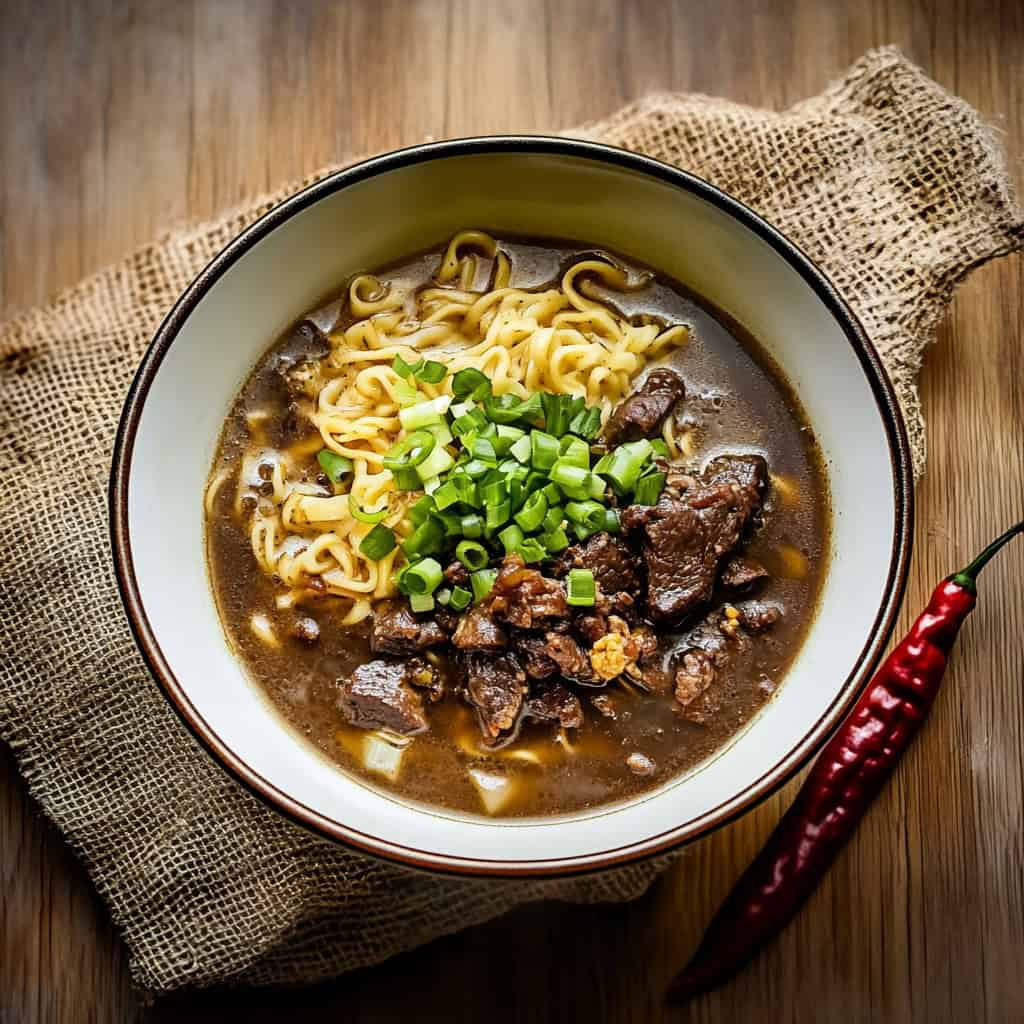
Why You'll Love This Recipe
- Authentic taste straight from Naga City's streets
- Rich, complex flavors from slow-cooked beef
- Tender, melt-in-your-mouth meat
- Customizable spice level
- Perfect comfort food for rainy days
- Restaurant-quality dish made at home
Ingredients
This authentic Bicolano Kinalas recipe uses traditional ingredients that create layers of deep, rich flavor. Beef bones and tendons provide collagen for a silky broth, while the signature brown gravy gets its distinctive taste from powdered dried shrimp - a key ingredient that delivers intense umami notes.
Fresh yellow noodles offer the perfect chewy texture to complement the tender meat. The blend of fish sauce, soy sauce, and vinegar creates a balanced savory-tangy profile that's characteristic of Bicol cuisine.
Simple garnishes like spring onions, calamansi, and bird's eye chilies allow diners to customize each bowl to their preferred level of brightness and heat, staying true to how this beloved street food is served in its hometown of Naga City.
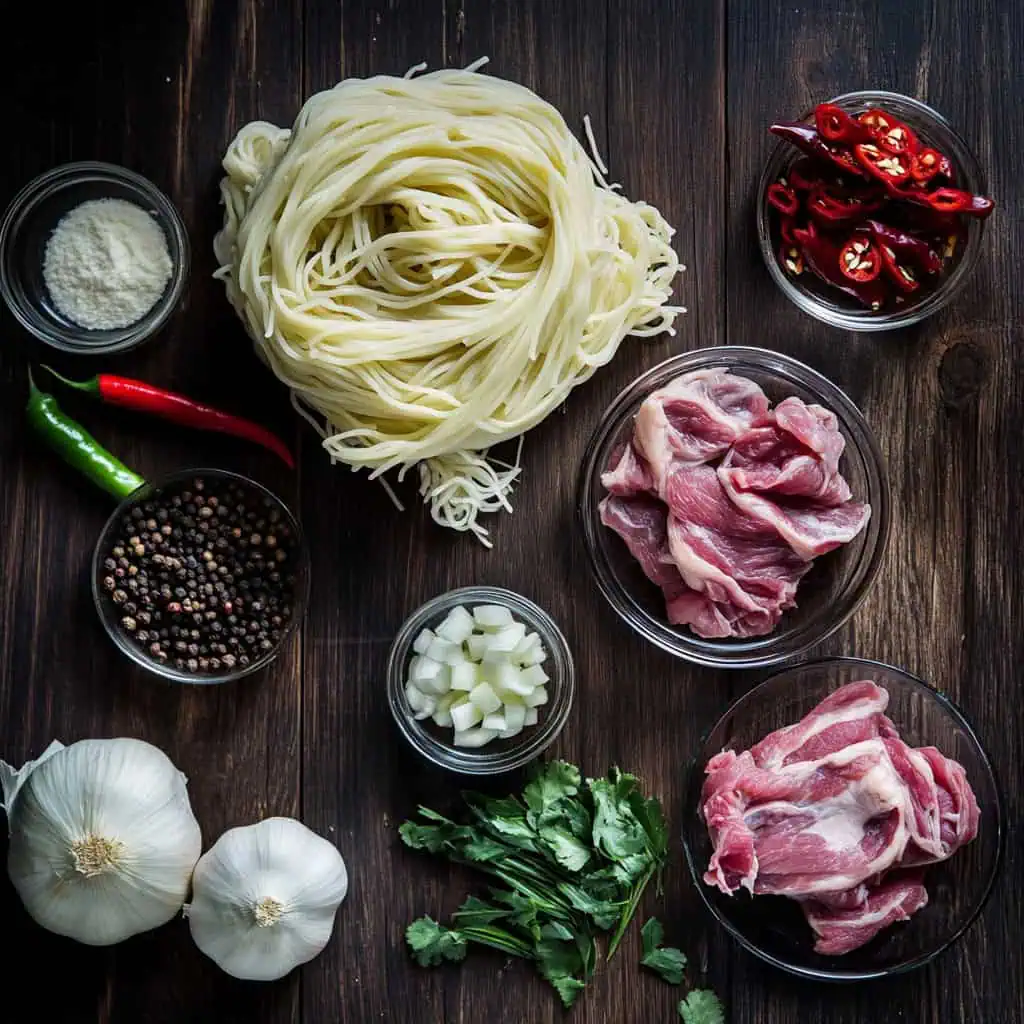
For the Noodles:
- 500g medium thickness fresh yellow noodles (Shanghai Noodles)
For the Soup (Sabaw):
- 2kg beef leg bones with meat
- 500g beef tendons
- 2 tablespoons whole peppercorns
- 2 tablespoons sea salt
- 3 white onions, quartered
- Water
For the Signature Brown Gravy (Sarsa):
- 3 cups shrimp stock
- 2 tablespoons fish sauce
- 8 tablespoons (½ cup) cornstarch
- 2 tablespoons soy sauce
- 2 tablespoons vinegar
- 1 tablespoon sesame oil
- 4 tablespoons (¼ cup) powdered dried shrimp
- 4 cloves garlic, minced
- 1 medium shallot, minced
- Salt to taste
- Cooking oil
Garnishes:
- Spring onions, chopped
- Calamansi (optional)
- Bird's eye chilies (optional)
Equipment
- Large stockpot - For simmering the soup base for hours, allowing the flavors to develop and the meat to become tender
- Medium saucepan - Used specifically for preparing the signature brown gravy
- Colander - Essential for straining the broth and separating the meat from bones
- Sharp knife - Needed for the precise work of removing meat from bones
- Cutting board - Provides a stable surface for meat preparation and vegetable chopping
- Coffee grinder - Used to grind dried shrimp into a fine powder for the gravy
- Measuring cups and spoons - For accurate ingredient portions
- Ladle - For serving the hot soup without spills
- Serving bowls - Deep bowls are traditional for serving kinalas
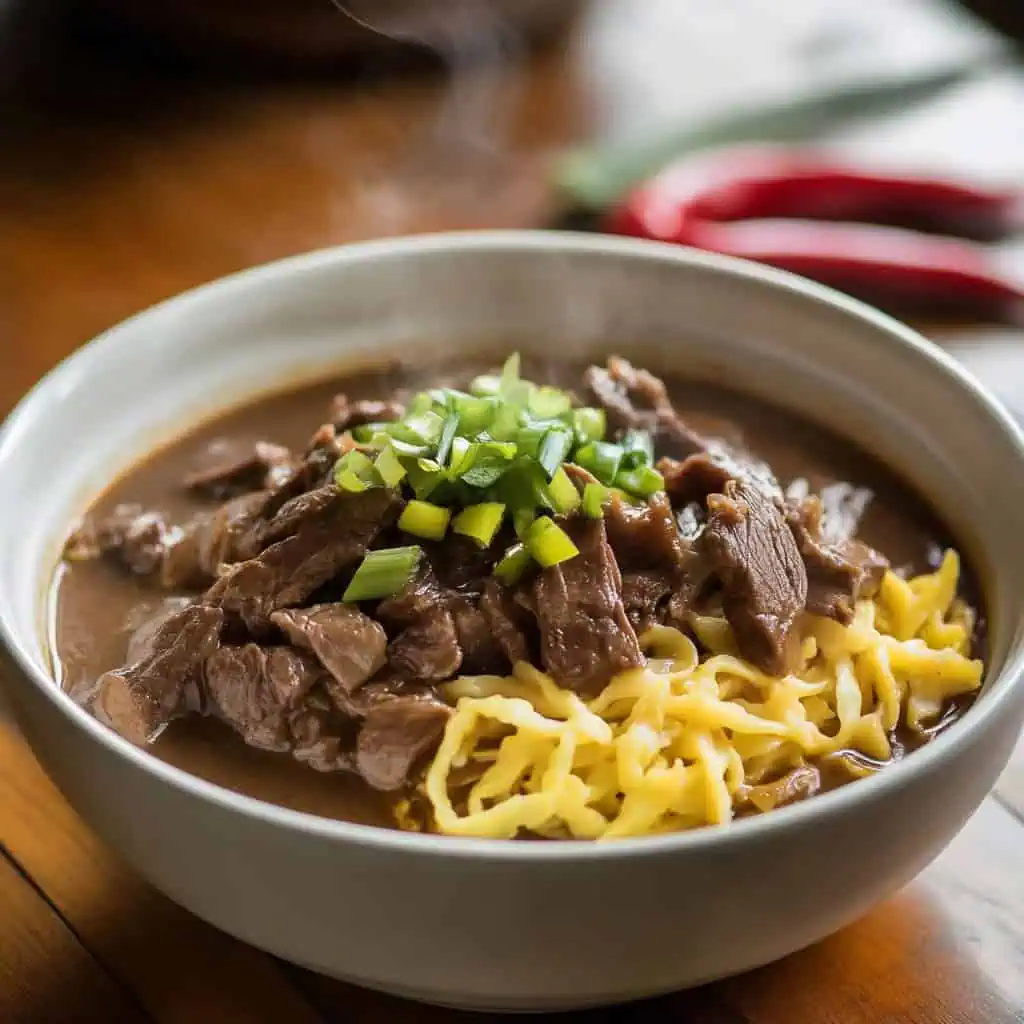
How To Make
- For the broth and meat: Begin by cleaning the beef bones and face meat thoroughly in cold water. Place them in a large pot and cover with water. Bring to a high boil (212°F/100°C), then reduce heat to a low simmer (185°F/85°C). Skim off any scum that rises to the surface. Add whole garlic cloves, onions, and peppercorns. Maintain this gentle simmer for 2-3 hours until the meat easily separates from the bones.
- For the brown gravy: While the meat is cooking, prepare the signature gravy. In a separate pan over medium heat (350°F/175°F), sauté minced garlic until golden. Add powdered dried shrimp and cook for 1-2 minutes. Lower heat to medium-low (300°F/150°C) and gradually add soy sauce, beef broth, and cornstarch slurry (corn starch mixed with water). Simmer while stirring constantly until the sauce thickens, about 5-7 minutes.
- For assembly: Once the meat is tender, carefully remove it from the bones. This is where the dish gets its name "kinalas." Shred the meat into bite-sized pieces. Prepare your serving bowls by arranging cooked egg noodles. In each bowl, place a portion of the shredded meat. Pour hot broth over the noodles and meat (maintaining temperature at 185°F/85°C for serving). Top with a generous amount of the brown gravy. Garnish with chopped green onions and fried garlic. Serve immediately while hot, accompanied by siling labuyo (bird's eye chilies) and calamansi on the side for diners to adjust the heat and sourness to their taste.
Note: The broth should be kept at a consistent temperature (185°F/85°C) throughout service to ensure the noodles stay tender and the dish remains hot.

Tips from Lola's Kitchen
- Low and slow cooking: Simmer soup on the lowest possible heat for a clearer, more flavorful broth
- Two-stage cooking: Don't skip the initial boiling and rinsing step - it ensures a clean-tasting soup without impurities
- Perfect powder: Grind dried shrimp as finely as possible using a coffee grinder for a smoother gravy
- Separate storage: Always store extra gravy separately from the soup to maintain its thick consistency
- Bone selection: When buying beef bones, look for those with plenty of meat still attached and some marrow inside
- Balance is key: The magic of kinalas is in the balance between the clean broth and rich gravy - don't let one overpower the other
- Patience pays off: The longer you simmer the bones, the more collagen is released, creating that signature lip-smacking quality
Substitutions
- Meat alternatives: Replace beef with pork face meat or even chicken bones if beef isn't available
- Stock options: Use chicken stock if shrimp stock is unavailable, though the flavor profile will be milder
- Onion variations: Substitute regular onions for shallots in the gravy if needed
- Citrus swap: Use lemon if calamansi is unavailable in your area
- Noodle options: While traditional yellow noodles are ideal, egg noodles or even ramen noodles can work in a pinch
- Dried shrimp substitutes: If you can't find dried shrimp, shrimp paste (bagoong alamang) can provide a similar umami note, though use it sparingly
- Vinegar choices: Rice vinegar or white vinegar can replace cane vinegar
Troubleshooting
- Gravy too thick? Add hot shrimp stock gradually while whisking until you reach desired consistency
- Soup cloudy? Strain through cheesecloth or a fine-mesh strainer for a clearer appearance
- Meat tough? Simmer longer on lower heat - tough meat means it needs more cooking time
- Noodles clumping? Rinse with hot water right before serving and separate with chopsticks
- Gravy lumpy? Ensure cornstarch is fully dissolved in cold water before adding to the hot mixture
- Broth too oily? Refrigerate overnight and remove solidified fat from the top before reheating
- Flavor lacking depth? Add a tablespoon of beef bouillon or a splash more fish sauce
Storage & Reheating
- Component separation: Store soup base, meat, gravy, and noodles separately for best results
- Refrigeration timeframe: Components can be refrigerated for up to 3 days in airtight containers
- Freezing option: Freeze soup base and meat for up to 3 months in freezer-safe containers
- Proper reheating: Reheat soup to boiling before serving to ensure food safety
- Noodle caution: Never freeze cooked noodles as they'll become mushy - always cook fresh
- Gravy revival: When reheating gravy, add a splash of water and whisk continuously to restore smooth consistency
- Portioning tip: Freeze soup base in individual serving sizes for quicker thawing and reheating
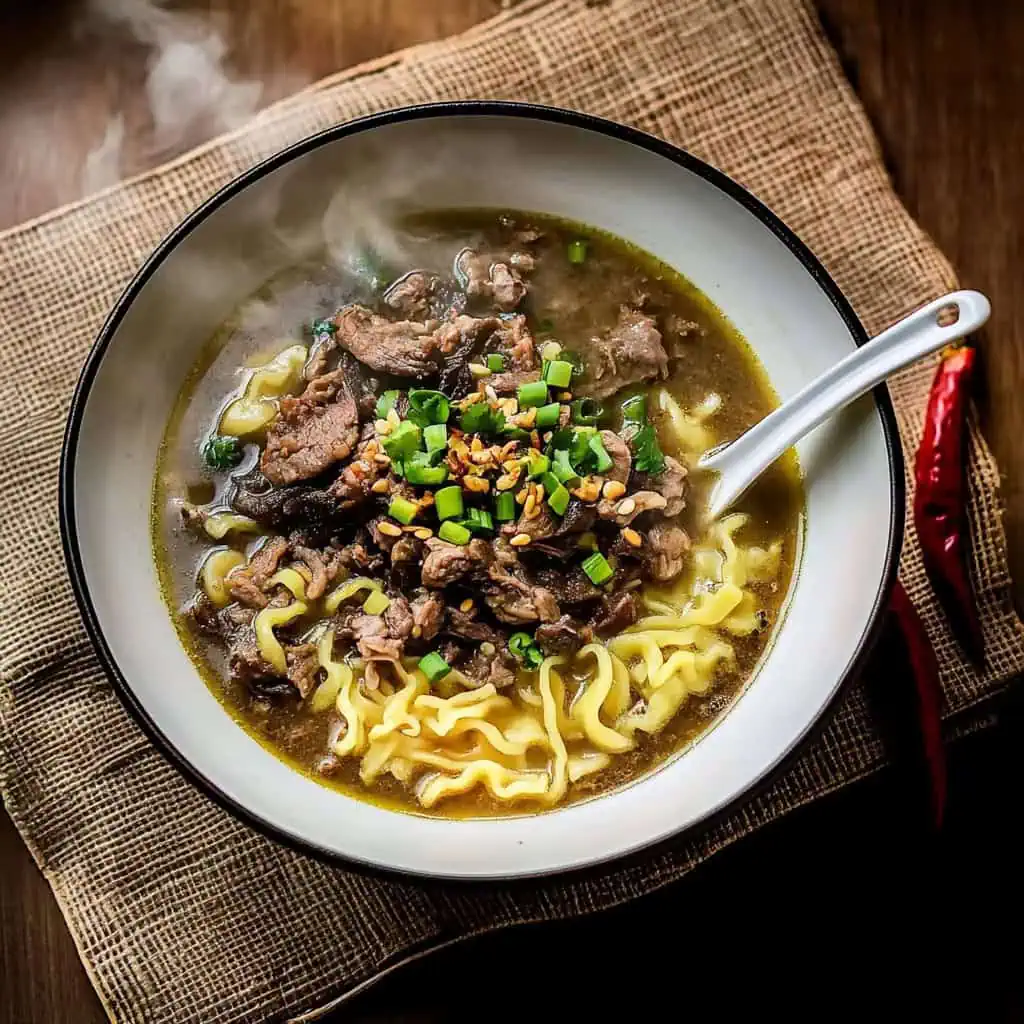
FAQ
Why is it called Kinalas?
"Kinalas" means "removed" in Bicolano, referring to the meat that is carefully removed from the bones.
Can I make this ahead of time?
Yes, you can prepare the soup and gravy up to 3 days ahead. Store separately in the refrigerator and cook noodles fresh when ready to serve.
Is Kinalas very spicy?
Traditional Kinalas isn't inherently spicy, but you can adjust the heat level with chilies according to your preference.
Can I use store-bought stock instead of making my own?
Yes, you can use store-bought beef stock, but homemade stock will provide a more authentic flavor. If using store-bought, consider enriching it with additional aromatics.
How do I know when the meat is perfectly cooked?
The meat should easily pull away from the bones with gentle pressure from a fork. If it's still tough, continue simmering.
What makes the gravy brown?
The combination of soy sauce, powdered dried shrimp, and careful caramelization of ingredients gives the gravy its distinctive dark brown color.
Can I make a vegetarian version?
While not traditional, you could create a mushroom-based version using shiitake mushrooms for umami depth, though it would be a significant departure from authentic Kinalas.
What's the best noodle type to use?
Medium-thick fresh yellow noodles (similar to Shanghai noodles) are traditional and best complement the dish's textures.
How do I serve Kinalas at a party?
Set up a Kinalas bar with the hot broth, meat, noodles, and gravy in separate serving containers. Let guests assemble their own bowls with desired garnishes.
Is this dish healthy?
Kinalas contains protein from the meat and can be made healthier by skimming excess fat from the broth and adding vegetables as garnish.
Related
Looking for other recipes like this? Try these:
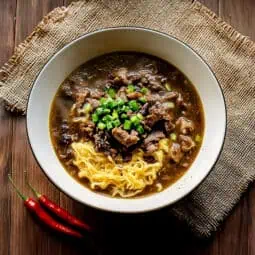
Authentic Bicolano Kinalas
Equipment
- Large stockpot (for simmering soup) - kaldero
- Medium saucepan (for gravy) - kaserola
- Colander (salaan)
- Sharp knife (kutsilyo)
- Cutting board (tadtaran)
- Coffee grinder (for dried shrimp) - pandikdik
- Measuring cups and spoons (Panukat)
- Ladle - sandok
- Serving bowls (mangkok)
Ingredients
For the Noodles
- 500 g medium thickness fresh yellow noodles Shanghai Noodles - pancit
For the Soup (Sabaw)
- 2 kg beef leg bones with meat - buto ng baka na may karne
- 500 g beef tendons - litid ng baka
- 2 tablespoon whole peppercorns - paminta
- 2 tablespoon sea salt - asin
- 3 pcs white onion quartered - sibuyas
- Water - tubig
For the Signature Brown Gravy (Sarsa)
- 3 cups shrimp stock - sabaw ng hipon
- 2 tablespoon fish sauce - patis
- 8 tablespoon ½ cup cornstarch - gawgaw
- 2 tablespoon soy sauce - toyo
- 2 tablespoon vinegar - suka
- 1 tablespoon sesame oil - langis ng sesame
- 4 tablespoon ¼ cup powdered dried shrimp - hibi
- 4 cloves garlic minced - bawang
- 1 medium shallot minced - sibuyas tagalog
- Salt to taste - asin
- Cooking oil - mantika
Garnishes
- Spring onions chopped - sibuyas dahon
- Calamansi optional - kalamansi
- Bird's eye chilies optional - siling labuyo
Instructions
For the broth and meat (para sa sabaw at karne):
- Begin by cleaning the beef bones and face meat thoroughly in cold water (malamig na tubig). Place them in a large pot and cover with water. Bring to a high boil (212°F/100°C), then reduce heat to a low simmer (185°F/85°C). Skim off any scum (langis) that rises to the surface. Add whole garlic cloves (bawang), onions (sibuyas), and peppercorns (paminta). Maintain this gentle simmer for 2-3 hours until the meat easily separates from the bones.
For the brown gravy (para sa sarsa):
- While the meat is cooking, prepare the signature gravy. In a separate pan over medium heat (350°F/175°F), sauté minced garlic until golden. Add powdered dried shrimp and cook for 1-2 minutes. Lower heat to medium-low (300°F/150°C) and gradually add soy sauce (toyo), beef broth, and cornstarch slurry (corn starch na tinunaw sa tubig). Simmer while stirring constantly until the sauce thickens (hanggang lumapot), about 5-7 minutes.
For assembly (pagbuo ng kinalas):
- Once the meat is tender, carefully remove it from the bones. This is where the dish gets its name "kinalas." Shred the meat into bite-sized pieces.
- Prepare your serving bowls by arranging cooked egg noodles (miki). In each bowl, place a portion of the shredded meat. Pour hot broth over the noodles and meat (maintaining temperature at 185°F/85°C for serving). Top with a generous amount of the brown gravy. Garnish with chopped green onions (dahon ng sibuyas) and fried garlic.
- Serve immediately while hot, accompanied by siling labuyo (bird's eye chilies) and calamansi on the side for diners to adjust the heat and sourness to their taste.
- Note: The broth should be kept at a consistent temperature (185°F/85°C) throughout service to ensure the noodles stay tender and the dish remains hot.
Tips from Lola's Kitchen
- Simmer soup on lowest possible heat for clearer broth
- Don't skip the initial boiling and rinsing step - it ensures clean-tasting soup
- Grind dried shrimp as finely as possible for smooth gravy
- Store extra gravy separately from soup
Nutrition
The Story Behind Bicolano Kinalas
Long before Naga City became known as the "Heart of Bicol," a humble street vendor in Dayangdang Street created what would become one of the region's most beloved comfort foods. Dating back to the early 1970s, this unnamed elderly vendor introduced Kinalas, revolutionizing the local street food scene with his meticulous preparation of beef bones and signature brown gravy.
What started as a simple street food quickly captured the hearts and palates of Bicolanos. The dish earned its name "Kinalas" from the traditional preparation method - where tender meat is carefully removed or "kinalas" from the bones, typically from the face or leg parts of beef. This technique, passed down through generations of Bicolano cooks, ensures that each bowl contains the most flavorful and tender pieces of meat.
While the original recipe exclusively used beef, modern variations have evolved to include pork face meat (maskara) and even beef brain (utak) for those seeking the ultimate authentic experience. However, what truly sets Kinalas apart from other Filipino noodle soups isn't just its choice of meat - it's the distinctive brown gravy that turns this simple noodle soup into something extraordinary. Made with powdered dried shrimp, garlic, and a careful balance of seasonings, this sauce recipe remains a closely guarded secret among Naga's veteran vendors.
Today, Kinalas has transcended its humble beginnings to become Bicol's answer to the popular mami. While you'll find it served in restaurants throughout the region, many locals will tell you that the best bowls are still found in the simple carinderias and street stalls of Naga City, where vendors wake up before dawn to begin the long process of preparing this labor-intensive dish. Each bowl serves as a testament to the rich culinary heritage of the Bicol region, where time-honored cooking techniques transform simple ingredients into extraordinary flavors.
The popularity of Kinalas extends beyond Naga City's borders, with visitors from across the Philippines making special trips just to taste this legendary noodle soup. Food bloggers, culinary enthusiasts, and even celebrity chefs have helped spread the word about this unique Bicolano delicacy, cementing its place in the pantheon of must-try Filipino dishes.






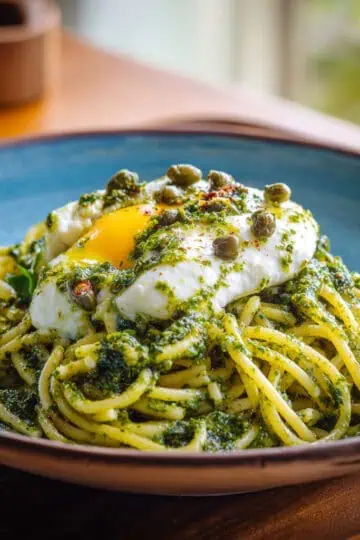
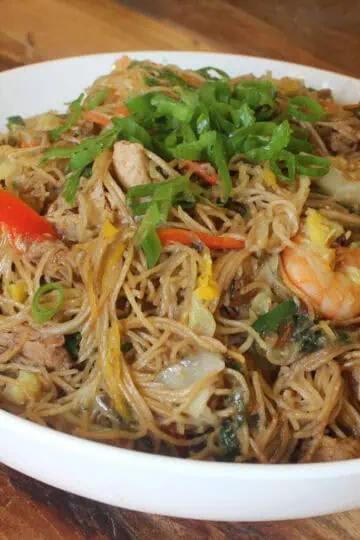
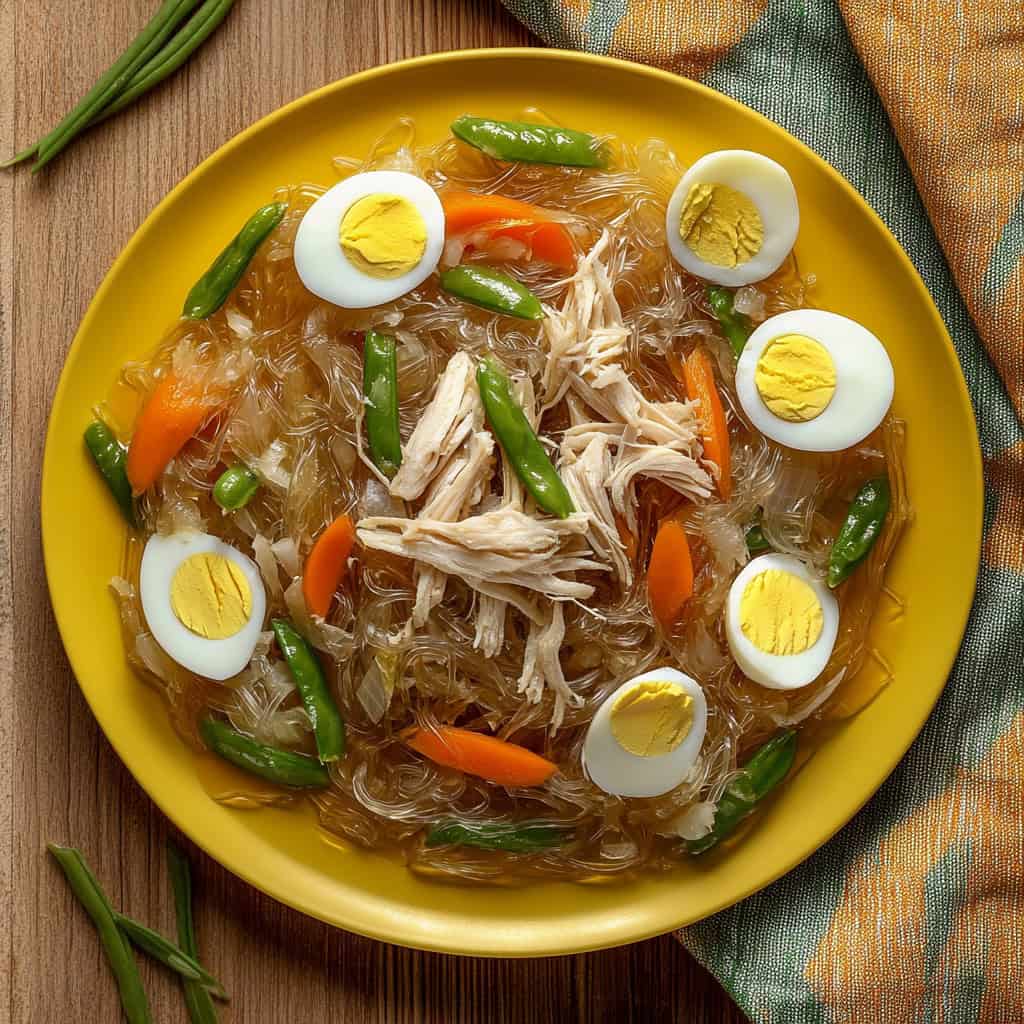
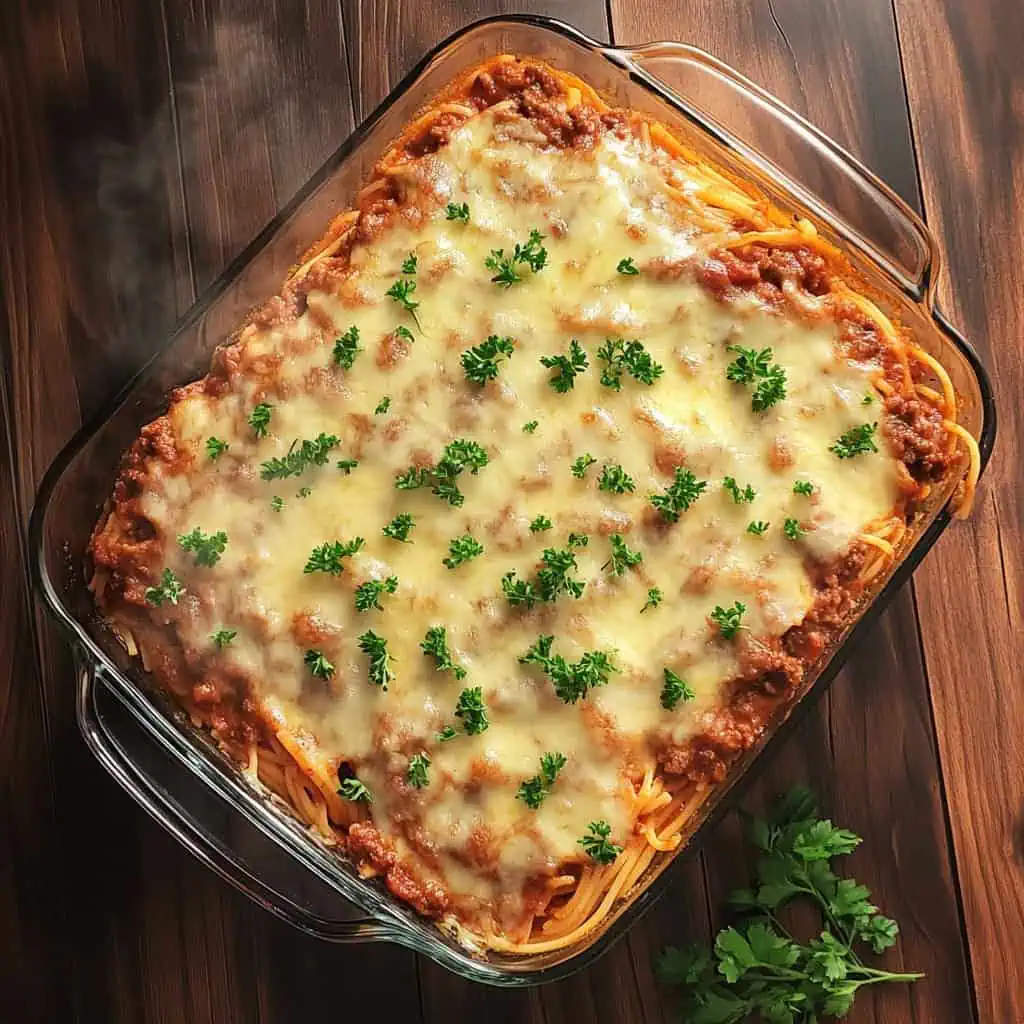
Comments
No Comments